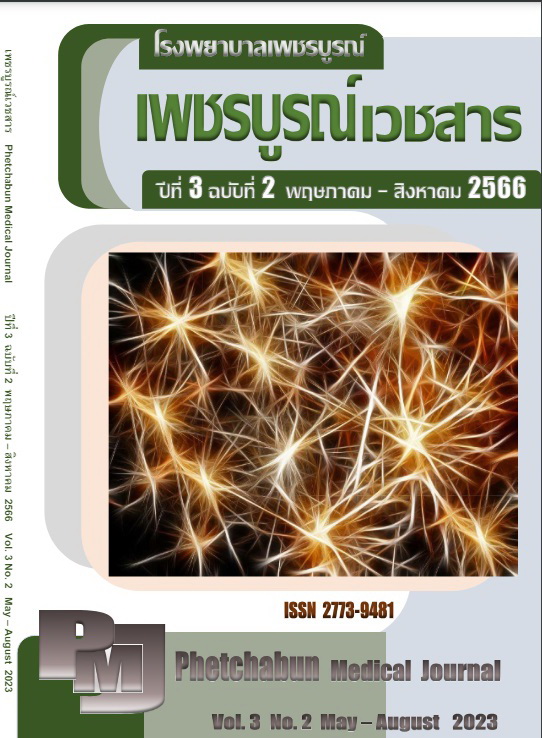Effects of nursing practice guideline for pediatric patients with heated humidified high flow nasal canula therapy
Keywords:
Oxygen therapy, heat humidified high flow nasal canula, nursing practice for pediatric patientsAbstract
High flow oxygen therapy is an important and increasing trend in pediatric patients with respiratory problems. The purpose of this quasi-experimental research was to develop and study the effects of nursing practice guidelines for pediatric patients with heat humidified high flow nasal canula therapy. The study was conducted between October 2021 to April 2022. The sample consisted of pediatric patients with dyspnea aged between 1 month–12 years who received heated humidified high flow nasal canula (HHHFNC) in the pediatric ward at Somdejphrajaotaksin Maharaj hospital. Samples were purposively selected of 60 subjects and divided into 2 groups: the control group receiving HHHFNC before developing nursing practice guidelines, and the experimental group receiving HHHFNC after developing nursing practice guidelines, that were 30 subjects in each. The research tools included: 1) nursing practice guidelines for pediatric patients receiving HHHFNC therapy that developed and validity approved by 3 experts: 2) Information recording form for patients and professional nurses, 3) Clinical indicators assessment form and 4) Professional nurse knowledge assessment form in caring for pediatric patients receiving HHHFNC therapy. Data were analyzed using statistics including frequency,
percentage, mean, standard deviation, paired t-test, and chi-square test. Statistical significance was set at 0.05.
The results revealed that the duration of HHHFNC therapy and length of stay of pediatric patients comparing between the groups before and after developing the nursing practice guidelines was not difference (p>0.05). The group after using the nursing practice guidelines had a decreased incidence of epistaxis complications during on HHHFNC (3.3, 13.3, p<0.001), however, the incidence of failure from on HHHFNC increased with statistical significance compared to the group before using the nursing practice guidelines (20.0, 13.3, p<0.001). Moreover, nurses had a higher mean knowledge score after developing and using nursing practice guidelines than before using nursing practice guidelines (12.9, 10.5, p<0.001). In summary, the developed nursing practice guidelines for pediatric patients receiving HHHFNC was effective in reducing complications of HHHFNC therapy. The results suggest that the developed nursing practice guidelines should be used in routine work. and develop practice guidelines for weaning off high-flow oxygen therapy that are specific to each age group and disease pathology in pediatric patients with respiratory problems.

Published
How to Cite
Issue
Section
License

This work is licensed under a Creative Commons Attribution-NonCommercial-NoDerivatives 4.0 International License.


